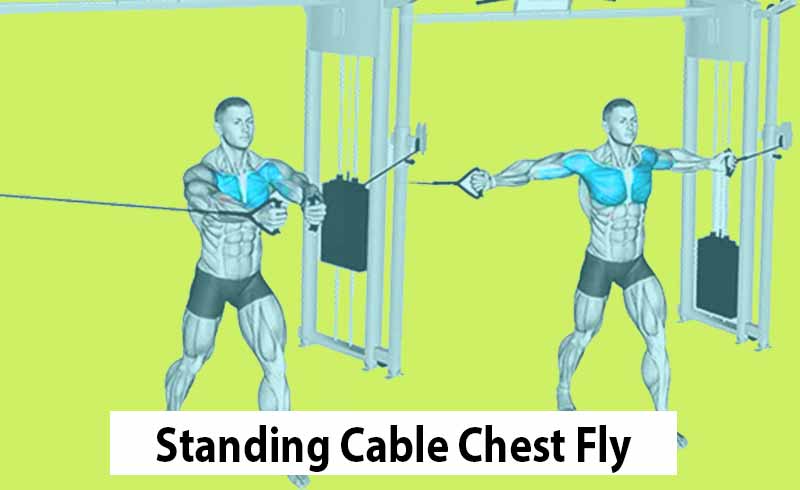When it comes to sculpting a powerful chest, the Standing Cable Chest Fly is a game changer.
This exercise works your pectoral muscles while also giving a unique range of motion that standard chest workouts may miss.
In this exercise guide, we’ll go over all the information you need to execute the Standing Cable Fly flawlessly, its benefits, muscles worked, variations and alternatives.
What Is the Standing Cable Chest Fly?
The Standing Cable Chest Fly is an isolation workout that uses a cable machine to target your chest muscles.
This exercise, unlike compound movements, primarily targets your pecs, assisting you in achieving a well-rounded chest and increased upper body strength.
Why Should You Use a Cable Machine?
Throughout the full range of motion, the cable machine maintains continuous tension.
This keeps your chest muscles engaged at all times, boosting muscle fiber activation and potential growth.
Unlike dumbbell exercises, where tension might decrease at the top of the movement, the cable machine keeps your muscles working engaged and under tension during the whole range of motion.
Cable Chest Fly Muscles Worked
1. Pectoralis Major

The primary target of the Standing Cable Flyes is the pectoralis major. consists of two main segments: the clavicular head and the sternal head.
2. Pectoralis Minor

It plays a crucial role in movements like deep breathing, shoulder protraction, and scapular downward rotation.
3. Anterior Deltoids and Triceps
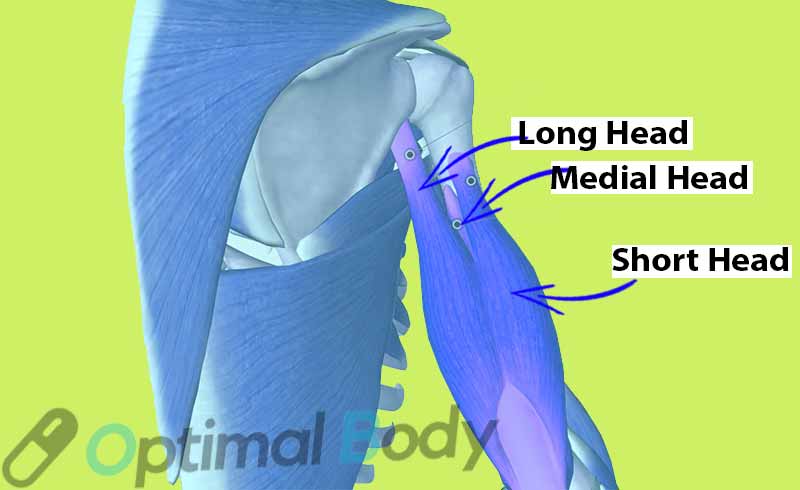
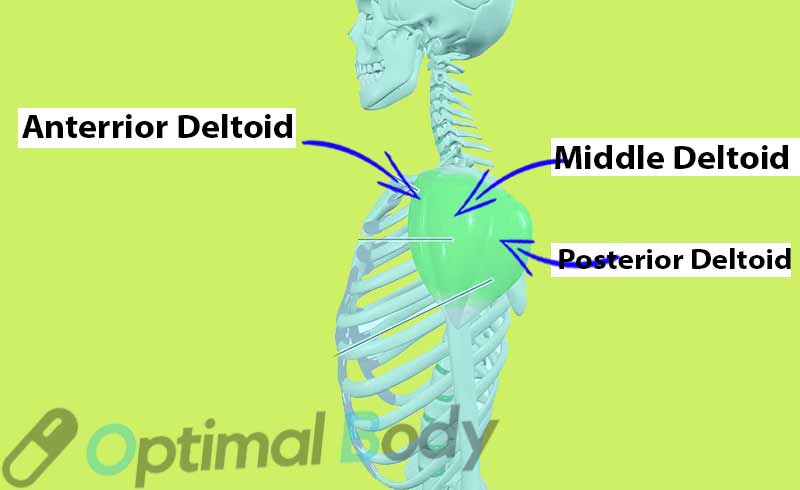 While the primary focus is on the pectorals, the Cable Standing Chest Fly also engages the anterior deltoids (front shoulders) and the triceps to a certain extent.
While the primary focus is on the pectorals, the Cable Standing Chest Fly also engages the anterior deltoids (front shoulders) and the triceps to a certain extent.
This comprehensive engagement makes it a compound-isolation exercise, providing a holistic upper body workout.
The Benefits of the Standing Cable Flyes
Incorporating the Standing Cable Chest Fly into your workout routine offers a multitude of benefits that contribute to overall chest development and upper body strength.
Here is a list of the important ones:
1. Isolation and Targeted Development
As an isolation exercise, the Cable Chest Fly allows you to solely concentrate on the chest muscles.
This isolation is essential for addressing any muscle imbalances and ensuring comprehensive chest development.
2. Constant Tension for Muscle Growth
The cable machine’s unique characteristic of providing constant tension is a game-changer.
Unlike free weights that might have varying resistance at different points of the movement, the cable machine maintains tension throughout.
This consistent tension increases the time under tension for your muscles, promoting muscle growth and hypertrophy.
3. Joint-Friendly Movement
Compared to exercises like the barbell bench press, which can place considerable stress on the shoulder joints, the Standing Cable Chest Fly is a joint-friendly alternative.
The controlled movement pattern and consistent tension reduce the risk of joint strain and injury, making it suitable for gym trainers with shoulder sensitivities.
4. Versatility and Angle Variation
The cable machine‘s adjustable settings allow you to modify cable height and angles, creating a diverse range of chest stimulation.
By altering these variables, you can target different portions of the chest, which leads to a well-rounded chest development.
How to Perform the Standing Cable Chest Fly Properly
- Set Up: Adjust the cable pulleys to shoulder height. Stand in the center of the machine with your feet shoulder-width apart.
- Grip: Grasp the handles with your palms facing forward and arms extended out to your sides. Keep a slight bend in your elbows.
- Position: Step forward to create tension on the cables. Maintain an upright posture, engaging your core for stability.
- Movement: Exhale as you bring your hands together in front of your body. Avoid touching the handles and try to maintain tension in your chest.
- Return: Inhale and slowly return your arms to the starting position in a controlled manner.
- Repetitions: Perform the desired number of repetitions, focusing on maintaining proper form.
Common Mistakes to Avoid
- Incorrect Body Position: Maintain an open chest and stable core and avoid excessive shoulder rolling or twisting.
- Using Heavy Weights: Prioritize control over weight. Maintain proper form to prevent joint stress and injury.
- Overextending Shoulders: Avoid overextending your shoulders at the top of the movement and keep tension and control throughout.
Top 5 Cable Chest Fly Variations To Diversify Your Routine
Incorporating different variations of the Standing Cable Chest Fly can target various areas of the chest and keep your workouts engaging and effective.
1. Single-Arm Cable Chest Fly
Unilateral exercises like the Single-Arm Cable Chest Fly can help identify muscle imbalances and improve symmetry.
How To Do Single-Arm Cable Fly?
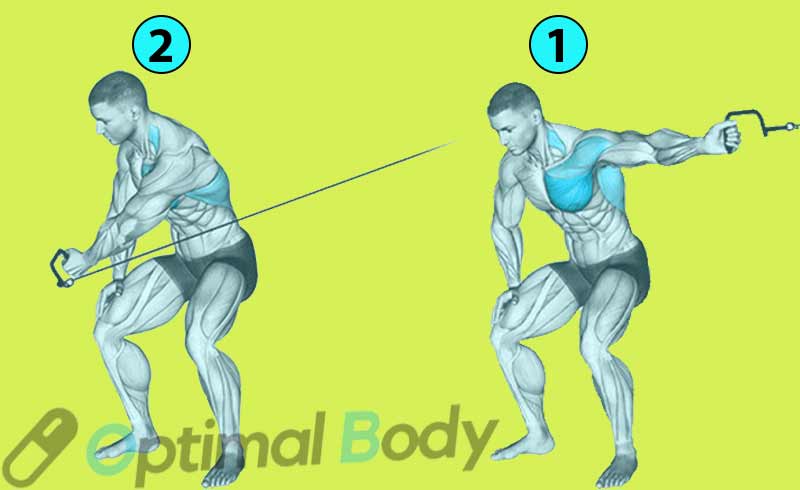
- Stand sideways to the cable machine with your feet slightly wider than your shoulders.
- Hold one cable handle at shoulder height and extend your arm.
- Bend slightly forward and bring your arm diagonally across your body, creating a hugging motion.
- Return to the starting position in a controlled manner.
- Switch sides and repeat the movement.
2. Low Cable Chest Fly
Also called standing incline cable fly, This exercise targets the upper chest muscles with the Low Cable Chest Fly variation.
How To Do Low Cable Pec Fly?
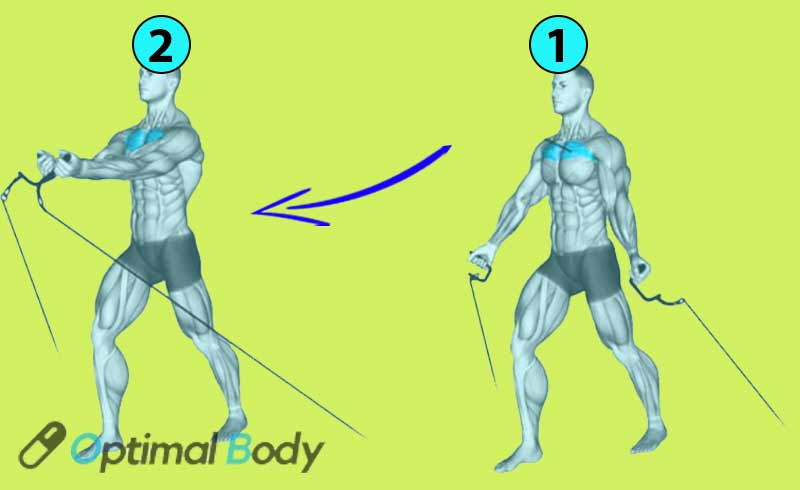
- Set the cable handles to the lowest position.
- Hold the handles with palms facing forward and arms by your sides.
- Step forward slightly, maintaining an upright posture.
- Bend your elbows and bring the handles together until your elbows align with your chest.
3. High Cable Chest Fly
Known as standing decline cable flyes,it docuses on the lower chest and engages the anterior deltoids and triceps.
Here is how to do it:
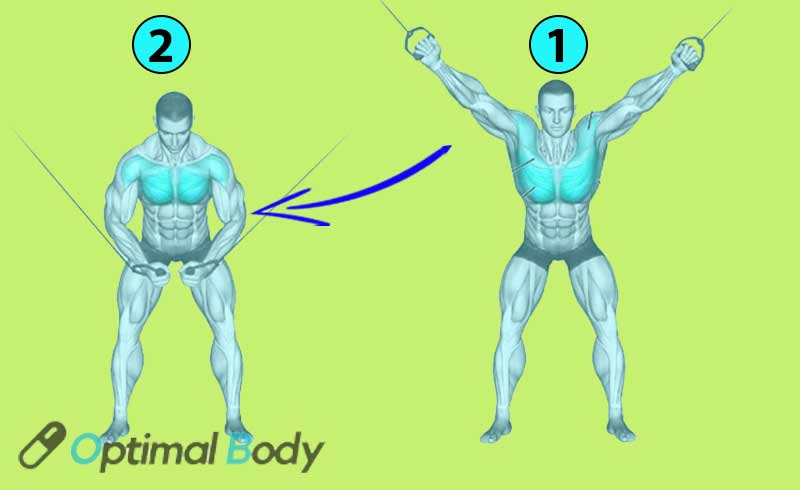
- Set the cable handles to the highest position.
- Hold the handles with palms facing forward and arms close to your body.
- Step forward with a squared stance and hinge slightly at the hips.
- Press the handles forward until your hands meet, slightly below chest height.
- Open your arms out to the sides, feeling a deep stretch in your chest.
- Press the handles back to the starting position with a strong contraction.
4. Standing Resistance Band Chest Fly
If you lack access to a cable machine or dumbbells, you can still get the same benefits using resistance bands only.
How To Do Standing Resistance Band Chest Flys?
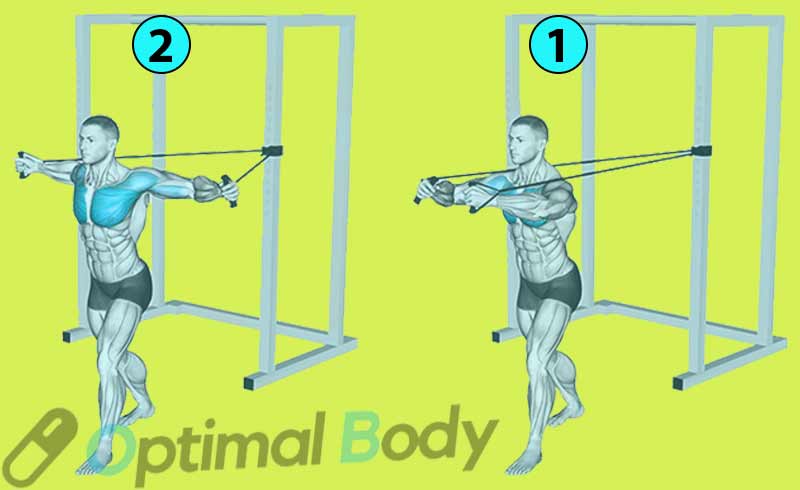
- Attach a resistance band at chest height.
- Hold the band handles with your arms extended out to the sides.
- Follow a similar movement pattern, bringing your hands together in front of your body.
5. Seated Cable Flyes:
Standing Cable Chest Fly Alternatives
There are other exercises you can do to target your chest in different ways.
Let me explain some of them:
1. Seated Machine Fly:
This is a gym machine exercise where you sit down and use handles to push your arms together in front of you.
This movement helps your chest muscles grow and become stronger.
2. Dumbbell Fly:
Lie down on a bench and hold a weight in each hand, like holding two books.
With your arms slightly bent, you’ll open your arms wide, like you’re stretching, and then bring them back up. It’s like spreading your wings and then closing them.
3. Squeeze Press:
Hold two heavy plates or weights together in front of your chest and then pushing them away from you.
This exercise involves pressing the weights while keeping them close together.
It not only works your chest but also engages your shoulders and the back of your arms (triceps).
4. Push-Ups:
Push-ups are a classic bodyweight exercise. You start in a plank position, with your hands on the ground slightly wider than shoulder-width apart.
Then you lower your body down and push it back up, it’s like pushing the ground away from you.
5. TRX Chest Fly:
If you have a TRX suspension trainer (a type of fitness equipment), you can do TRX chest flyes.
Hold onto the TRX handles and lean forward slightly, then pull your body back up.
It’s like doing a cable flye, but using your body weight and the TRX instead.
Frequently Asked Questions (FAQ)
Let’s address some common queries regarding the Standing Cable Chest Fly:
1. Are Cable Chest Flys Effective?
Absolutely. Cable Chest Flys are an effective exercise for targeting the chest muscles. The constant tension provided by the cable machine enhances muscle activation and growth potential.
2. What Is the Ideal Cable Height for Pec Flys?
Position the cable pulleys slightly above shoulder height to achieve optimal range of motion and tension throughout the movement.
3. How Many Reps Should I Do?
Perform 8–12 repetitions for each set with moderate weights. Aim to be close to muscle failure by the end of each set.
References and Sources:
- Signorile JF, Rendos NK, Heredia Vargas HH, Alipio TC, Regis RC, Eltoukhy MM, Nargund RS, Romero MA. Differences in Muscle Activation and Kinematics Between Cable-Based and Selectorized Weight Training. J Strength Cond Res. 2017 Feb;31(2):313-322. doi: 10.1519/JSC.0000000000001493. PMID: 28129277.
- Uhl TL, Muir TA, Lawson L. Electromyographical assessment of passive, active assistive, and active shoulder rehabilitation exercises. PM and R. 2010;2(2):132-141.
- Wise MB, Uhl TL, Mattacola CG, Nitz AJ, Kibler WB. The effect of limb support on muscle activation during shoulder exercises. J Shoulder Elbow Surg. 2004;13(6):614-620. doi:10.1016/j.jse.2004.04.006
- Lehman GJ, Buchan DD, Lundy A, Myers N, Nalborczyk A. Variations in muscle activation levels during traditional latissimus dorsi weight training exercises: An experimental study. Dyn Med. 2004 Jun 30;3(1):4. doi: 10.1186/1476-5918-3-4. PMID: 15228624; PMCID: PMC449729.
- Gentil, Paulo & Oliveira, Elke & Junior, Valdinar & Carmo, Jake & Bottaro, Martim. (2007). Effects of Exercise Order on Upper-Body Muscle Activation and Exercise Performance. Journal of strength and conditioning research / National Strength & Conditioning Association. 21. 1082-6. 10.1519/R-21216.1.
- Bench Press Calculator - April 22, 2024
- Press to Handstand: Ultimate Step-by-Step Guide - April 22, 2024
- Cable Press (How To Do, Benefits, Targeted Muscles, Alternative) - April 22, 2024

